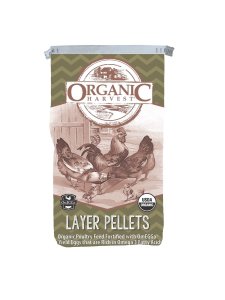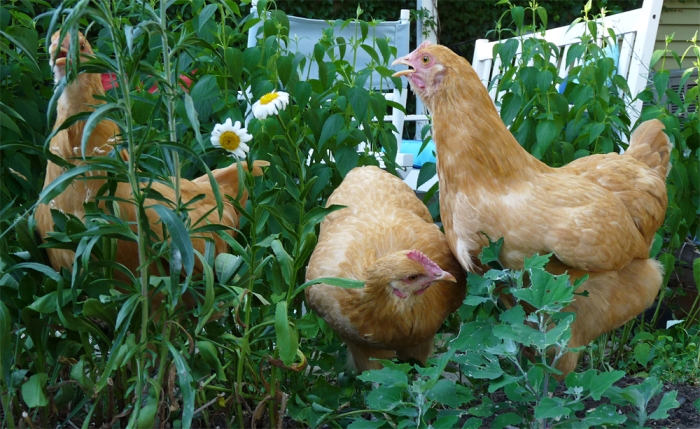 Taken from Municode primarily. Always check with your city! This list is not comprehensive, and there are many grey areas in municipal code. Contact me if your city should be added to the list!
Taken from Municode primarily. Always check with your city! This list is not comprehensive, and there are many grey areas in municipal code. Contact me if your city should be added to the list!
Cities that ALLOW chickens & fowl:
Ada Township (restricted to zoned area only)
Addison Township (restricted to zoned areas, acreage limit)
Allen Park – UPDATE 2018, though not in municode search online, they have added exclusions for ‘fowl’. Please reference the restricted section to access the muni code in pdf format.
Auburn Hills (specific chicken ordinance) 6 or less, with permit
Berkley (3 hens) 5 Permits available for the city, 2 taken as of 9/19/2018
Canton, Charter Township allowed in areas zoned Rural Agricultural
Centerline (allowed at schools, severe distance restriction)
Charlotte (6 hens, permit required, 10 permits allowed for the city)
Chelsea (4 hens, permit required)
Clawson (severe distance restriction)
Dearborn (permit required) UPDATE 2020: We’ve heard that they are not issuing new permits at this time
East Lansing (4 hens, permit required) application available online
Eastpointe (3 hens allowed with permit) application available online
Farmington Hills (severe distance restriction)
Ferndale (6 hens allowed with permit – increased from 3 allowed as of Sept 2018 )
Georgetown Township (6 chickens, zoning restrictions) Section 3.1 (Q)
Grand Rapids (specific chicken ordinance)
Harrison Township (Unclear- no language banning them, check with city)
Hazel Park (permit required)
Holland (up to 6 chickens depending on amount of land)
Holly Township (class 3 animal, requires certain amount of land)
Holly (Village of) 3 chickens allowed
Lansing (City of Lansing)
Lathrup Village (specific chicken ordinance)
Livonia (allowed in specifically zoned areas)
Madison Heights (up to 6 allowed, permit required)
Mundy Charter Township (allowed only on farm parcels, 50 chickens)
Muskegon Charter Township (allowed ONLY in rural residential RR zone)
Northville (distance restriction)
Norton Shores (4 hens for residential)
Novi (MAYBE, unclear, check with city code enforcement) lists accessory animals as allows, only females and no roosters, does not specifically state chickens though
Pontiac (acreage restriction)
Rochester Hills (acreage limit)
Roseville (4 hens with permit)
Royal Oak (implied to be allowed, ordinance governs keeping it clean)
Southfield (distance limit, potential zoning issues)
Troy (permit required)
Warren (permit required) 2018 UPDATE: they will allow 3 hens, however online municode has not been updated.
West Bloomfield (not specific restriction other than keeping them confined to your property)
Westland (allowed with special permission & land requirements)
Ypsilanti (specific chicken ordinance)
Cities that DO NOT allow chickens & fowl:
Ada Township Sec. 78-17. – Keeping of pets and livestock. The keeping of more than three dogs and/or cats or the keeping of poultry, hogs, horses or other livestock is prohibited within any district except the AGP, RP-1, RP-2 and RR districts; provided, however, that any litter of dogs or cats which causes the aforesaid limit of three to be exceeded shall not constitute a violation of this provision for a period of four months after birth.(Ord. No. O-042682-1, § 3.13, 4-26-1982; Ord. No. O-021710-1, § 5, 2-17-2010)
Allen Park Sec. 6-50. Restrictions on keeping non-common pets or wildlife.
(a) It shall be unlawful for any person to keep, harbor or raise any non-common pet or wildlife including but not limited to any of the following: (1) Bear; (2) Canine, except and not including any member of the dog family customarily domesticated by man;
(3) Exotic bees; (4) Feline, except and not including any member of the cat family not customarily domesticated by man; (5) Hoofed animal, including potbellied pigs;
(6) Marsupial; (7) Primate; (8) Raptor; and (9) Reptile, except and not including any non-venomous member of the order Crocodylia under six inches in length.
(10) Fowl, except and not including any member of the bird family not customarily
domesticated by man that is housed in a cage in a family residence and whose wings have been clipped to prevent flight.
Birmingham Sec. 18-8. – Keeping of domestic animals and fowl. No person shall keep or house any animals within the city except dogs cats, birds, or animals commonly classified as pets. No horse, cow, calf, swine, sheep, goat, chickens, geese or ducks shall be kept in any dwelling or part thereof. Nor shall any such animal be kept on the same lot or premises with a dwelling. This offense is punishable by up to 90 days in jail and/or $500.00 fine. (Code 1963, § 9.64; Ord. No. 2075, 11-28-11)
Bloomfield Hills Sec. 3-4. – Livestock prohibited. (b)”Livestock” means horses and other equine, cattle, sheep, swine, mules, burros, goats, llamas or other new world camelids, bison, poultry, rabbits and other animals used for human food and fiber or primarily for service rather than companionship to humans. Livestock does not include dogs and cats.(c) It shall be unlawful and a violation of this section for any person to possess or maintain livestock within the city. Owners or possessors of livestock shall be responsible for compliance with this section and subject to punishment for violations. For purposes of this section, “possess or maintain” means the act or ability of having or exerting control and influence over livestock, without regard to ownership and “owners or possessors” mean persons who have a right of property in livestock, who have livestock in their care of custody, or who knowingly permit livestock to remain on or about property occupied or controlled by them.
Bronson 90.03 KEEPING OF FARM OR WILD ANIMALS. (A) No person shall own, keep or house any farm or wild animals within the city. (B) No horses, cows, swine, goats, sheep, chickens , geese, ducks, donkeys, pigeons or any other farm or wild animal be kept in any dwelling, or part thereof. (C) No such animals or fowl shall under any circumstances be kept on any lot or premises within the city limits.
Dearborn Heights Sec. 6-66. – Domestic animals and fowl. No person shall keep or house any animals or domestic fowl within the city except dogs, cats, canaries or small animals commonly classified as pets which are customarily kept or housed inside dwellings as household pets. (Code 1969, § 9.87)
Detroit Sec. 6-1-3. – Owning, harboring, keeping, maintaining, selling or transferring of farm or wild animals prohibited; exception for circuses, zoos, and other approved activities; separate violations for each animal; disposition of animals in violation of this section.(a) It shall be unlawful for a person to own, harbor, keep, or maintain, sell, or transfer any farm animal, or any wild animal, on their premises or at a public place within the City; provided, that farm animals or wild animals may be kept in circuses, zoos, or laboratories, subject to the approval of the City, where the care or custody is under the care of a trained and qualified animal attendant at all times, whose responsibility shall be to see that such animals are securely under restraint. (Ord. No. 04-04, § 1, 1-30-04)
Farmington (UNCLEAR ; acreage limit, farms can keep, but has on the books an ordinance disallowing livestock) Sec. 20-303. – Livestock, exotic or vicious animals. The keeping of livestock is prohibited. The keeping of any exotic or vicious animal is prohibited.
Flint (residential- allowed in agri zoning) 9-15.1 KEEPING OF POULTRY AND THE LIKE RESTRICTED. No poultry or domestic fowl, other than household pets such as canaries and parakeets, shall be kept upon any residentially zoned lot within the City. (Ord. 2058, passed 6-10-1968)
Fraser Sec. 32-33. – Animals. No animals, livestock or poultry of any kind shall be raised, bred or kept on any lot, except that non-vicious dogs, cats or other household pets may be kept, provided they are not kept, bred or maintained for any commercial purposes. (Ord. No. 279, § 3.02, 12-12-96)
Garden City 90.01 PETS; SALE OF ANIMALS; PROHIBITIONS. (A) No person shall keep or house any animals or fowl within the city except dogs, cats, canaries, or animals commonly classified as pets, customarily kept or housed inside dwellings as household pets. (B) No person shall sell, or offer for sale, barter, or give away baby chicks, rabbits, ducklings, or other fowl as pets or novelties, whether or not dyed, colored, or otherwise artificially treated. This division shall not be construed to prohibit the display or sale of natural chicks or ducklings in proper brooder facilities by hatcheries or stores engaged in the business of selling the same to be raised for commercial purposes.(Ord. 11-006, passed 4-25-11)
Grosse Pointe Sec. 10-4. – Keeping domestic animals and fowl generally. Except as provided in this chapter, no person shall keep or house any animals or domestic fowl within the city except dogs, cats, birds, fowl or animals commonly classified as pets. (Code 1980, § 9.84)
Grosse Pointe Woods Sec. 6-3. – Livestock. (a) definitions. The following words, terms and phrases, when used in this section, shall have the meanings ascribed to them in this section, except where the context clearly indicates a different meaning: Livestock means horses, cows, calves, swine, sheep, goats, rabbits, chickens, geese, ducks, pigeons or other like or similar animals or fowl.(b) Harboring. It shall be unlawful for any person to keep livestock in the city with the exception of the Grosse Pointe Woods Hunt Club.(Code 1975, § 8-13-2; Code 1997, § 6-157)
Harper Woods Sec. 4-2. – Animals prohibited; exceptions. (a) It shall be unlawful for any person to keep any animal or fowl within five hundred (500) feet of any dwelling, street, alley or public place, except such animals as are commonly kept or housed as household pets; or permit any animal or any fowl owned by him or in his possession or control to run at large in any street, alley or public place, or upon the premises of another without express permission of the owner or occupant thereof.
Huntington Woods Sec. 4-4. – Domestic animals and fowl. No person shall keep or house any animals other than domestic dogs, domestic cats, canaries or animals commonly classified as pets, which are customarily kept or housed inside dwellings as household pets. The term “pet” or “household pet,” as used in this section, does not include exotic, wild, vicious or dangerous animals including, but not limited to, any of the following: domestic fowl, live monkeys, alligator, crocodile, raccoon, skunk, fox, bear, sea mammal, poisonous snake, constrictor snake longer than six feet in length, member of the feline species other than the domestic cat, member of the canine species other than the domestic dog, or any other animal which would require a standard of care and control greater than that required for customary household pets sold by commercial pet shops. This section shall not apply to any lawfully operated zoo. (Code 1988, § 9.38; Ord. No. 423, § 1, 5-19-1998)
Mount Clemens 15.042 – Sec. 4.2 ANIMALS. No animals, livestock or poultry of any kind shall be raised, bred or kept on any residentially zoned or used property, except that non-vicious dogs, cats or other household pets may be kept, provided they are not kept, bred or maintained for any commercial purposes. All animals shall be maintained in accordance with applicable City Ordinances.
New Baltimore Sec. 8-6. – Domestic animals and fowl. No person shall keep or house any animals or domestic fowl within the city except dogs, cats, birds, fowl or animals commonly classified as pets. (Code 1981, § 9.65)
North Branch Section 2. RIGHT TO KEEP FARM ANIMALS. No person shall keep or harbor farm animals on any property within the Village limits unless the farm animals are located on a farm which had such farm animals on the effective date of the Village Zoning Ordinance, December 1, 1980 or unless a zoning variance has been granted.
Oak Park Sec. 14-5. – Keeping of animals and fowl. No person shall keep or house any animals or domestic fowl within the city except dogs, cats, canaries or animals commonly classified as pets which are customarily kept or housed inside dwellings as household pets, and excepting further, the temporary keeping of live poultry by any lawfully established live poultry market incidental to the normal course of business. (Code 1973, § 6-5)
Plymouth Sec. 14-4. – Domestic animals and fowl. No person shall keep or house any animals or domestic fowl within the city except dogs, cats, birds, fowl or animals commonly classified as pets. (Ord. No. 99-9, 6-21-99)
Rochester Sec. 8-5. – Unlawful to keep certain animals and fowl. No person shall keep or house any animals or domestic fowl within the city except dogs, cats, birds, or animals commonly classified as household pets. (Ord. No. 1991-15, 8-12-1991; Code 1982, § 9.2-4)
Romeo Sec. 4-1. – Keeping within corporate limits. No person shall keep any horses, cattle, swine, sheep, ponies, goats, rabbits, poultry or other animals and fowl, except dogs and cats, within the corporate village limits. (Code 1993, § 35.251)
Shelby Township Section 3.02. – Animals. No animals, livestock, or poultry of any kind shall be raised, bred or kept on any lot, except that non-vicious dogs, cats or other household pets may be kept, provided that they are not kept, bred or maintained for any commercial purpose. Horses may be allowed as per requirements of section 3.19. All animals shall be kept and maintained so as not to create a nuisance. The maintenance of animals is further regulated by chapter 6, article I of the Shelby Township Code of Ordinances. Kennels may be allowed as a special land use in the HM, Heavy Manufacturing District subject to compliance with the requirements of Section 13.51.(Ord. No. 212.5, § 2, 7-20-1999; Amend. of 10-21-2008; Ord. No. 212.89, 9-4-2012)
St. Clair Shores 35.059 – Farm animals prohibited. Sec. 19-9. No person shall own, keep, harbor, have custody or raise any farm animal except that one rabbit shall be permitted per residential premises. (chap. 19 eff. Nov. 22, 1988)
Sterling Heights SECTION 3.01. PERMITTED USES B. Agriculture, provided that on parcels of less than eight acres, there shall be no raising of livestock, fowl or other animals;
Taylor Sec. 14.09. – Keeping of animals. (a) Domestic animals, dogs, cats, birds and nonbreeding rabbits are limited to a total of three animals age four months or older per household. (b) Unless otherwise provided in this ordinance, no building or land in any district shall keep, raise, procreate or otherwise allow on the premises any wild or exotic animal, fowl, farm animal or livestock. (c) Excluded from this regulation are facilities owned and operated by the city and fully accredited academic institutions. All are subject to the health and sanitation provisions of the City of Taylor and shall not become a nuisance. (Ord. No. 09-434, § 14.09, 1-20-2009)
Utica Sec. 2-5-56Fowl—Prohibited. [Ord. No. 107, 9-2-2009; amended 2-16-2011 by Ord. No. 30] (a) No person shall have, or keep, or offer to sell any fowl within the City of Utica. “Fowl” includes any live chickens, geese, ducks, pigeons, or doves.(b) Any permits previously issued shall be grandfathered until such time as the fowl are deceased and at that time said permits shall expire and no new permits shall be granted.







 Taken from
Taken from 







































































